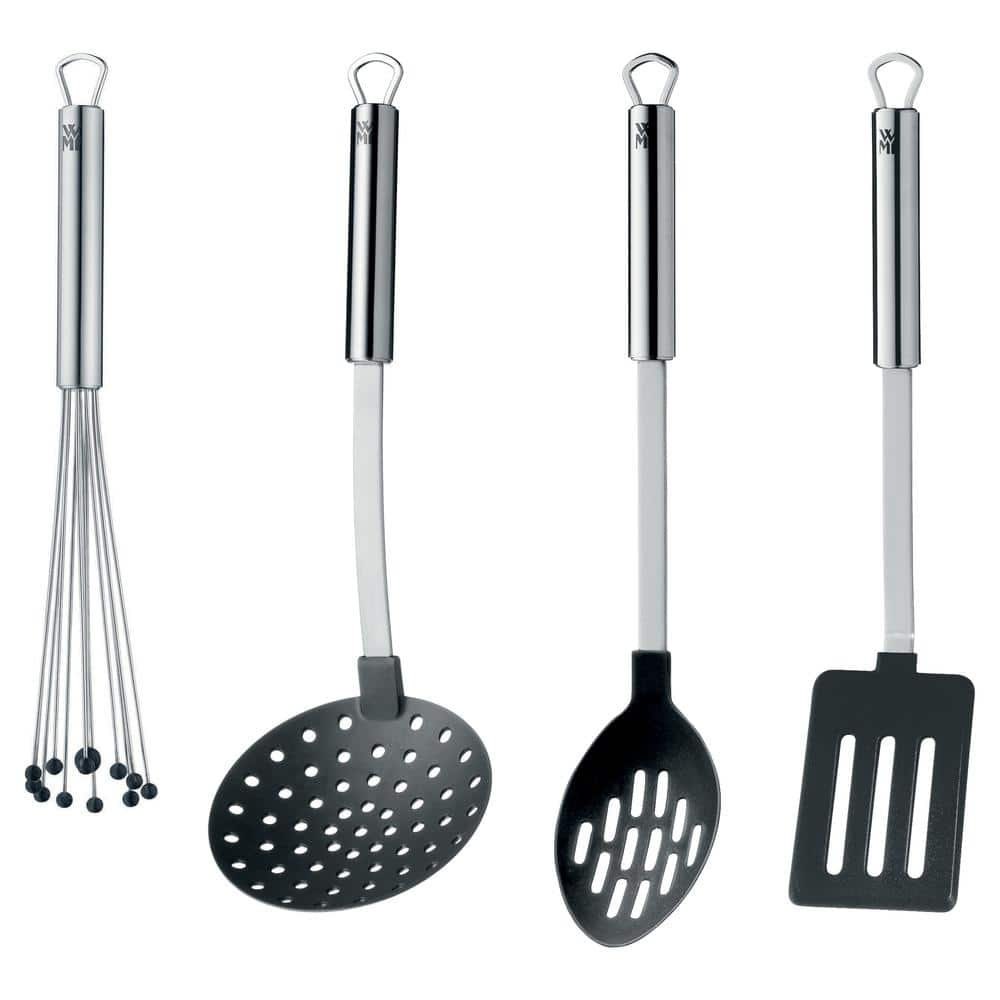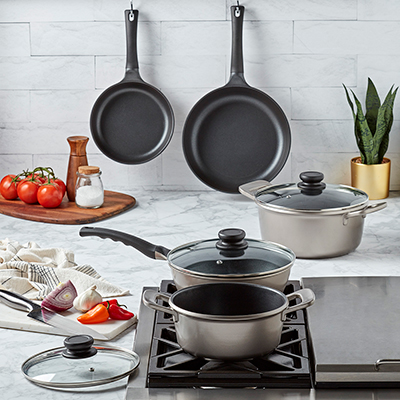Best Stock Pots for Your Kitchen
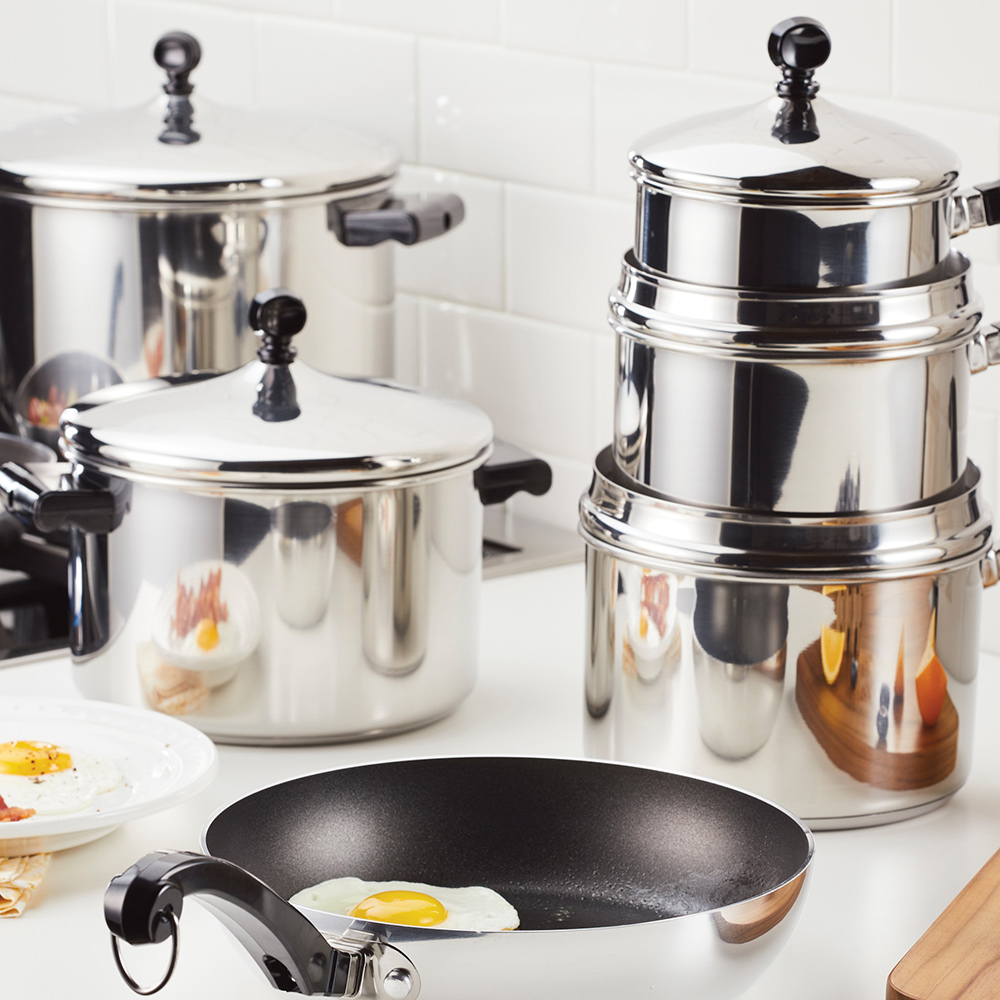
Last updated September 7, 2023
Versatile stock pots work hard in your kitchen. Use a stock pot to cook pasta, whip up soups and stews, boil ears of corn, or make a broth. A stock pot is a wide, flat-bottomed pot with straight sides. They come in various sizes and have lids and two handles for easy lifting. This guide will explain the differences and help you find the best stock pots for your kitchen.
Table of Contents
How to Choose the Best Stock Pot for Your Kitchen
Stainless Steel Stock Pots
Tri-Ply Stock Pots
Multi-Clad Stock Pots
Copper Stock Pots
Aluminum Stock Pots
How to Choose the Best Stock Pot for Your Kitchen
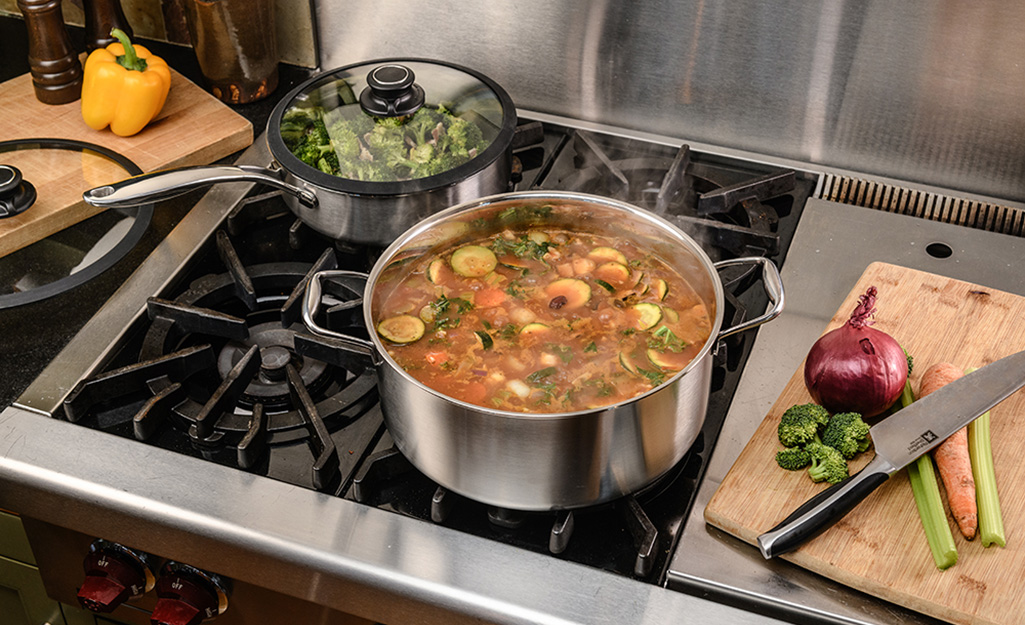
The best stock pot reviews often compare stock pot materials and construction details. Before you buy, also consider size, heat distribution capabilities, corrosion resistance, ease of care and cleaning and whether the stock pot can be used for open flame or induction cooking. Buyers in the food service industry may find the best large stock pot is a commercial model.
The material used to make a stock pot determines how efficiently it conducts and distributes heat. Other factors to look for, whether you're going to buy just one stock pot or a set of cookware, include:
- Size. Some cooks buy stock pots in several sizes. The best eight-quart stock pot might pasta swirl around freely when the water comes to a rolling boil. Many of the best twelve-quart stock pots can hold a turkey carcass for making broth and accept a steamer insert or other accessory. Larger, commercial stock pots are also available.
- Construction. Look at how well the rim is designed for pouring
and the thickness of the pot. If you’re buying stainless steel, check the steel grade. - Stain and Corrosion resistance. Will the stock pot be easy to clean and care for? Does it resist scratching from metal spoons or other kitchenware?
- Do you need a stock pot you can use for induction cooking?
- Some of the best stock pots have handles that are bolted or riveted on. Check to see if they ergonomically designed, and whether they'll stay cool while you’re cooking.
- Does the stock pot feel balanced when you lift it? Remember, it will be heavy when it’s full.
- Do you want a glass lid so you can see what’s cooking? If so, is the lid oven-safe? A lid with a small hole will let moisture vent.
Stainless Steel Stock Pots
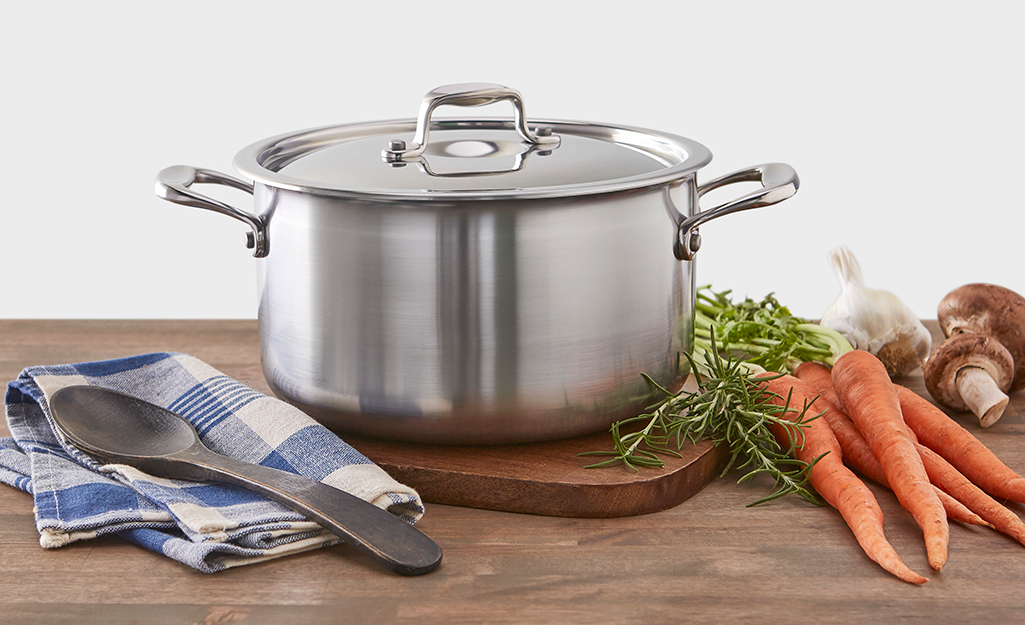
Many cooks consider stainless steel the best material for stock pots. It heats rapidly, is lightweight, easy to clean and built to last. Stainless steel stock pots don't have coatings that can wear off or get scratched, so you can use all kinds of cooking tools and kitchen utensils with them. Some of the best stainless steel stock pots can be used on induction cooktops. Stainless pots are often recommended as the best soup pots, thanks to their nonreactivity to tomatoes and other acidic foods.
The best stock pots in this category are available in different grades of stainless steel. A two-part number, like 18/10 or 18/8, indicates first the percentage of chromium and then the percentage of nickel used in the most common, food-grade stainless pots.
By itself, stainless steel is not a good heat conductor, so some stock pots have stainless cladding and cores or bottom plates made of aluminum or copper for better heat conduction. These materials also help make a stainless pot more corrosion resistant.
Tri-Ply Stock Pots

For better heat distribution and heat conductivity than stainless, consider a tri-ply stock pot. Tri-ply pots have an inner and outer layer of stainless steel and a middle, bonded layer of aluminum or copper. Some of the best and most durable tri-ply stock pots have bonded layers that go all the way up the sides. Tri-ply stock pots, thanks to their stainless steel interiors, resist reacting to foods. They aren’t truly nonstick, but foods are less likely to stick in tri-ply stock pots with a raised pattern or design inside and on the bottom. They resist stains and corrosion.
Most tri-ply stock pots are fine to use on induction cooktops. Some may be labeled as dishwasher safe, but hand washing is usually recommended. A lifetime warranty adds value when you buy a tri-ply stock pot
Multi-Clad Stock Pots
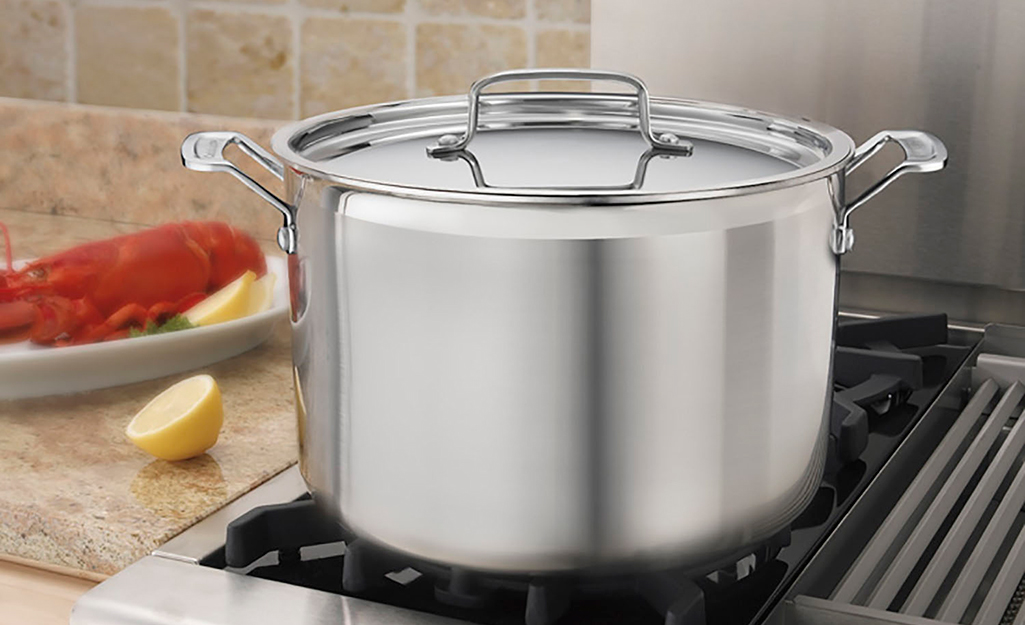
Multi-clad stock pots also have layers of different materials, with some featuring five or seven layers. Multiple layers add to the weight of the pot, although some cooks prefer them because they may help reduce the possibility the pot will eventually warp. Some multi-clad stock pots are safe for induction cooking.
Like tri-ply, these stock pots have aluminum cores for superior heat conduction and even heat distribution with inner and outer layers of stainless steel. Most of the best stock pots with multiple layers can be used on the stovetop and in the oven and cleaned in the dishwasher. Like tri-ply pots, the best stock pots with multiple layers often have cladding all the way up the sides.
Copper Stock Pots

Many chefs and home cooks choose copper stock pots for their beauty as well as their rapid, superior heat conduction. Copper cookware and stock pots are sometimes at the higher end of the price range but can be an excellent value when purchased for their heirloom quality. Most are durable and have stainless steel linings that won’t react with foods, although foods may stick.
Copper stock pots can’t be used on induction cooktops and need regular polishing and cleaning to keep their good looks. Copper loses heat quickly, which is an advantage when you’re taking foods off a heat source and need to stop heating immediately to avoid overcooking. As a rule of thumb, thicker copper stock pots perform better than thin ones.
Aluminum Stock Pots
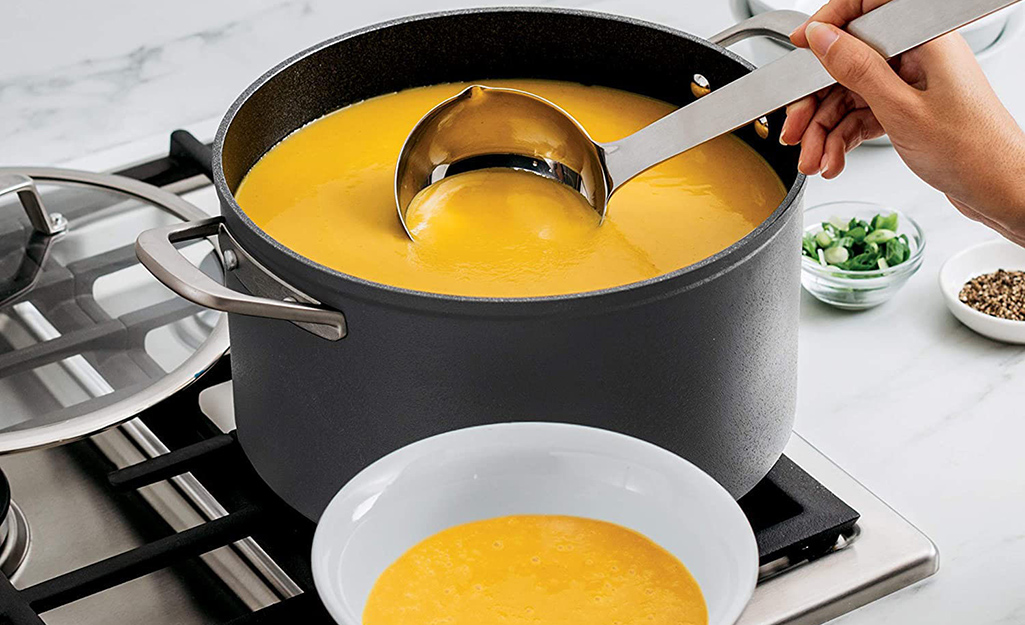
Aluminum stock pots are versatile cookware pieces typically available at an affordable price. They conduct heat rapidly but don’t offer the even heat distribution you’ll find in stainless. Only copper conducts heat better than aluminum, but some foods, such as tomatoes and vinegar, react to it, resulting in flavor or color changes. These kinds of foods can also damage the pans over time, although most aluminum stock pots are durable and a good value.
Aluminum, like copper, cools quickly once it’s removed from a source of heat, and it’s relatively lightweight. Aluminum isn’t suitable for induction cooktops.
Hard-Anodized Aluminum Stock Pots
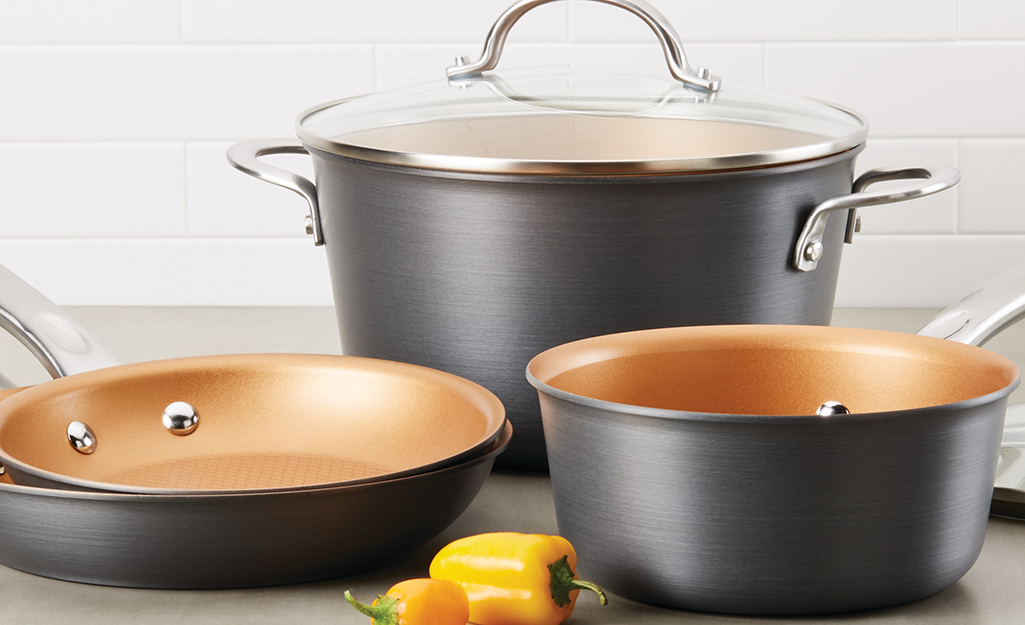
Hard-anodized aluminum stock pots and cookware are made from electrochemically-treated aluminum. This aluminum is about twice as hard as stainless steel and has an oxidized layer that resists scratching. Some interiors have raised designs to help foods release easily, so hard-anodized aluminum stock pots are somewhat non-stick. This material doesn’t react with foods.
Anodized stock pots are easy to clean and durable enough to use in the oven at high temperatures. Check your manufacturer's instructions for details. Although aluminum is generally lightweight, the chemical coating on anodized aluminum stock pots make them heavier than regular aluminum stock pots. Anodized aluminum stock pots should be handwashed.
Porcelain-Enameled Steel Stock Pots
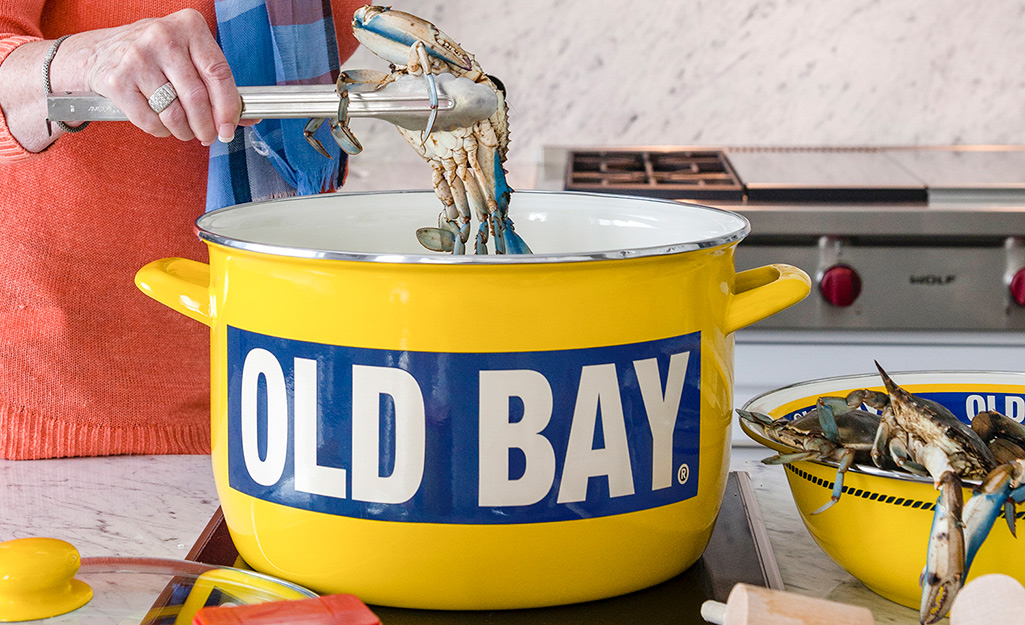
Porcelain-enameled stock pots are available in different colors and with various designs. Most are dishwasher safe, strong, easy to clean and lightweight. They are usually made of good quality carbon steel coated with porcelain enamel. Some have stainless steels rims for extra durability. Many are oven, stovetop and induction cooktop safe.
The best stock pots made with porcelain-enameled steel distribute heat evenly and quickly. They don’t react with acidic foods and are relatively nonstick, needing only a little oil or butter for cooking. The outside enamel coating can chip or crack if the pot is dropped or if the pot boils dry, but the stock pot won’t scratch or corrode with normal use. The best enamel coated stock pots often have a seamless coating and high-temperature handles and covers. These stock pots are not dishwasher safe.
Non-Stick Stock Pot

Many quality non-stick stock pots are constructed of aluminum and conduct heat well. Their non-stick finishes resist sticky or burned on food, so clean-up is easy. Most are easy to rinse and wipe out, although some are labeled dishwasher safe. Hand washing is usually a good idea to help the non-stick surfaces last longer.
For most non-stick cookware and stock pots, cook soups and stews and other foods on low to medium heats. Non-stick finish can be damaged at high heat settings. Most are oven safe, but not at high oven temperatures. Buy cooking utensils made of plastic, nylon or wood to use with non-stick cookware.
Choosing the best stock pots for your kitchen depends on your cooking needs. With varying sizes, features and durability, there is something for everyone. Ready to shop for stock pots? The Home Depot delivers online orders when and where you need them.




